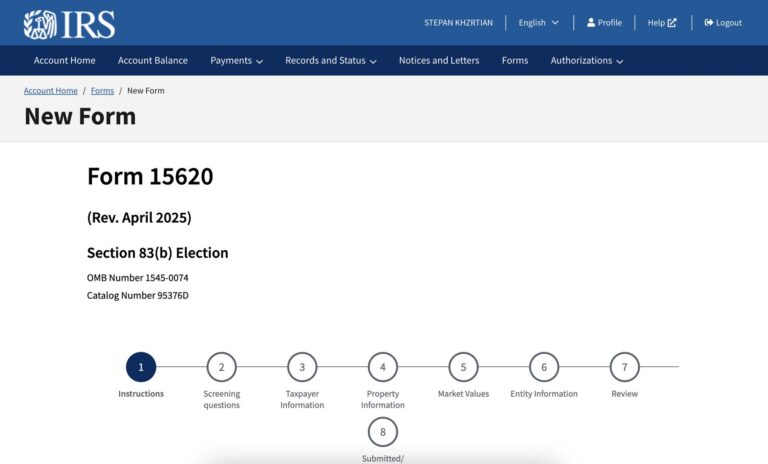Navigating some of your Startup’s Legal Jobs to be Done at Each Stage of Maturity
**IT IS CRITICAL FOR YOU TO KEEP IN MIND THAT THIS LIST IS NOT EXHAUSTIVE, AND IS NOT LEGAL ADVICE. THE ONLY WAY TO KNOW YOUR PARTICULAR LEGAL JOBS IS TO WORK WITH A LAWYER–DO NOT RELY ON THIS LIST ALONE!**
1. Bootstrap Stage: One of your Major Legal JTBD is to divert disaster at the most reasonable cost
At this initial stage, if your startups teeters between the edge of existing and not existing, or you’re operating on a shoestring budget, and there are a million things that you, as a founder, could do to keep the dream alive… spending time, money, and effort on perfect legal outcomes may not be the best use of resources. That said, you are also at the start of a series of branching legal consequences, many of which later become irreversible (I’m looking at you, 83(b) elections), while others can (and should) be fixed or redone once you have more breathing room in terms of capital.
In light of all of this, your main JTBD is to Divert Disaster; two essential (but not exhaustive) workstreams that help achieve this–and that are commonly botched–are around Intellectual Property (IP) and stock assignment.
- IP Assignment: Before you can turn your brilliant ideas into a profitable business, you need to ensure your intellectual property rights are protected. It’s crucial to establish effective IP assignment agreements with all service providers–that means contractors, advisors, and employees alike. This is particularly important for team members who might be working multiple jobs. Standard employment and consulting agreements can provide a solid foundation for IP rights–at a minimum, we want to see broad IP assignment, with few carveouts, and representations that the work is original–with indemnification obligations to give you more of a meaningful ability to recover damages should something go wrong. Remember, IP isn’t just about patents; it covers trademarks, copyrights, and trade secrets as well. That can mean data lists, designs, or anything you put to writing. Don’t let your ideas walk out the door with a departing team member–have them sign when you still have the leverage (early in the relationship).
- Stock Assignment: The allocation of stocks and the filing of 83(b) elections for vesting provisions need to be addressed ASAP–many folks often have their board approve of a grant of stock, but don’t get around to executing the Stock Purchase Agreement (or Restricted Stock Purchase Agreement) until much later; note that you should assume each purchaser’s window to file his or her 83(b) election is within 30 days of the board approval of the grant, not 30 days from when you sign your stock purchase agreement. Tax implications can be significant, and making the correct decisions here can save a lot of headaches (and money) down the line. We highly recommend double-checking with a lawyer that your stock assignments are properly executed before your company has a change in valuation–which often means receiving a written term sheet, but can also mean increase to your revenue, new assets, or many other kinds of changes.
2. Seed Stage: One of your Major Legal JTBD is to establish MVP legal foundations, and to incentivize service providers with equity grants as cheaply & effectively as possible
At this point, you’ve raised enough money to not be paying out of pocket, and you’ve likely validated enough key ideas about your business that you have a bit of breathing room to go beyond the most basic needs, but you mainly want to spend that on (1) making sure you don’t shoot yourself in the foot with a bad template that you’re going to reuse, or by totally missing a key regulation; and (2) incentivizing great talent to come help you build, cheaply, and without accidentally messing up your cap table.
So, your JTBD are to establish (1) an MVP MSA/TOS/other contract templates that you can generally self-service off of; and (2) a repeatable and low-cost system for incentivizing new service providers to work for equity.
- Create MVP Contract Templates: As your business grows, so does the complexity of your contracts. Your contracts should be customized to suit your unique needs and preferences. Consider starting with a standard document, such as those provided by Y Combinator (YC), and modify it to fit your needs. A few of the common templates that companies at this stage need or commonly use:
- Standard advisor, contractor, and employment agreements;
- A Terms of Service hosted online, to either manage risk around users’ use of your website, or especially for cloud-based, self-service SaaS, to also govern use of your SaaS product;
- A Cloud Services Agreement or “Software Licensing Agreement,” that governs use of your software product, particularly for B2B or when your customers expect to be able to negotiate this;
- An MSA for work that includes services and deliverables.
- Identify Risk Factors: It’s essential to at least identify any glaring legal issues that could disrupt your business, like regulatory oversights or reliance on potentially infringing data. Engage a legal professional to conduct a thorough risk assessment of your business and map out potential areas of concern.
- Effective Equity Issuance: Equity is a powerful tool for attracting and retaining top talent. It’s important to issue equity to new service providers in a cost-effective and legally sound manner. Equity agreements can have far-reaching implications, so it’s worth investing in legal advice before proceeding.
3. Series A/B Stage: One of your Major Legal JTBD is to establish a basic contract lifecycle management (CLM) practice that helps you close deals quickly, without unreasonable terms, and without unreasonable spend.
You are investing more in contract templates that help you achieve this, and are starting to hedge against more remote legal risks around compliance–from employment practices, to regulatory matters.
So, at this stage your JTBD are probably focused on (1) closing deals effectively, and (2) checking your legal blindspots.
- Close Deals Efficiently: Acquiring logos and top-line growth means making sure your customers’ redlines are negotiated reasonably and expeditiously. You may look to unblock legal spend & time by working with your counsel to create a ‘playbook’ to enable your team to negotiate lower-risk provisions, triaging the bulk of work away from legal. You might double down on your standard contract template to eliminate risk allocations that don’t mean as much to you but tend to block deals from being done quickly.
- Develop greater awareness of your legal blindspots: As headcount and revenue grows, so does a risk vector of securities grants, employment issues, state audits, tax, regulatory review, etc. You should start to work with a lawyer to map this landscape and know which issues are highest priority, and what the most reasonable way to mitigate those risks is. You don’t necessarily have the resources or bandwidth to invest deeply in fixing these, but you are previewing the issues and seeing what “little hinges” you can find to swing the “big door” of exposure.
4. Series C/D Stage: One of your Major Legal JTBD is to invest in robust risk mitigation systems.
Now that you have systems in place to divert basic disaster, issue equity reasonably, close contracts faster, and a general sense of what unique legal risks you should be thinking about, you likely have the breathing room (including a budget) to dive deeper into that “risk landscape” and hedge more existential risks that, relatively speaking, are more meaningful to your business than they were before your other rounds when there wasn’t much promise about the business to begin with.
A GC, or outside GC, starts becoming the quarterback for the various subject matter experts–privacy, disputes, employment, tax, etc–to act in a coordinated way to hedge legal risks to your business.
- Address Potential Risks in various subject matters: This stage is all about making sure your bases are covered, particularly with regulatory compliance, employment law, and investor relations, but also pertaining to your IP portfolio, securities rules, and more. With more financial resources available, you should start implementing legal best practices. It is also a good time to invest in cybersecurity measures and data protection strategies, given the heightened scrutiny and increasing complexity of your operations.
- Bonus Item: As these compliance and risk mitigation systems become more robust, and as you are post-PMF with a bit more focus on profitability, consider the “people, processes, and technology” that comprise your legal team, to think about how legal operations, technology, and clear company practices can be optimized to make these tasks less of a cost sink, and maybe even a revenue center (e.g. by better identifying contract terms that help you upsell.
We hope you found this guide helpful! Once more, it is critical for you to keep in mind that this list is not exhaustive, and is not legal advice. The only way to know your particular legal jobs to be done is to work with a lawyer–do not rely on this list alone!
Meanwhile, check out the Legal and Ops Legal for Lean Startups Playbook for more information and hacks. Until then, good luck founders!








